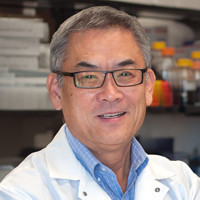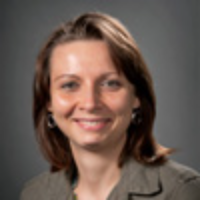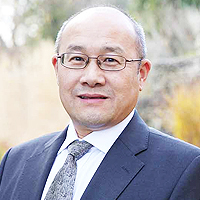Premaxillary osteotomy in children with bilateral cleft lip and palate: Skeletal and dental changes
Published on: 16th July, 2020
OCLC Number/Unique Identifier: 8639114756
Purpose: To evaluate changes in children with bilateral cleft lip and palate (BCLP) who premaxillary osteotomy and secondary alveolar bone grafting as compared to children with BCLP who are not indicated for surgery, and to determine variables that differentiate patients who do or do not require osteotomy.
Material and methods: Twenty-four children with BCLP were included in the study: 12 who underwent osteotomy (intervention group) and 12 who had no surgery (control group). Radiographic and model values of the intervention group were compared before (T1) and after (T2) premaxillary osteotomy, and measurements were compared with those from the control group at T1.
Results: Convexity, ANB (point A-nasion-point B), and maxillary depth was more diminished at T2 in children in the intervention group. Point A, anterior nasal spine, and pogonion were retroposed after surgery, and the anterior spine was higher. At T2, the upper incisors were proinclinated and intruded, and overbite was improved.
Models revealed increased intermolar intercanine width as well as intrusion of upper incisor after surgery. Premaxilla and upper molars were more extruded, had a higher total maxillary height and increased extrusion of upper incisor in children who underwent osteotomy.
Conclusion: After surgery, children who undergo surgery have a premaxilla that is more normalized and more level with the occlusal plane, as well as improved dental inclination. Variables that differentiate children who require osteotomy from those who do not include more extrusion and protrusion of the premaxilla, and a greater extrusion of the upper incisors.
Regeneration of deep intrabony periodontal defects with enamel matrix derivative: A case report
Published on: 19th March, 2021
OCLC Number/Unique Identifier: 9029521328
A clinical case of treatment of two severe intrabony defects on the aesthetic zone is reported and followed for one year.
The biomaterial of choice was enamel matrix derivative (Emdogain®; Straumann™) alone with a preservation papilla flap and a minimally invasive surgical technique.
After surgical treatment, the patient was kept in a supportive periodontal therapy programme with 6-month interval between appointments.
In the one year after surgery appointment, clinical and radiographic changes were observed, showing periodontal health and stability.
Branchio Oculo Facial Syndrome
Published on: 29th November, 2019
OCLC Number/Unique Identifier: 8508295972
A 3-month-old girl presented to the surgical consultation room with bilateral cleft lip incomplete. A girl weighing 4205 g, was born at term after an uneventful pregnancy with a birth weight of 2500 g. There was no family history. On examination, a congenital, linear, erythematous cutaneous anomaly on the left side of her neck was highlighted with ocular anomalies (strabismus and the eyes are widely spaced) and a broad nose with a flattened tip. The examination of the other systems was unremarkable. In front of the association of these different anomalies BOFS was suspected but molecular diagnosis has not been made. The child benefited surgery to correct cleft lip with tennisson procedure with a good postoperative result.
Role of orthodontist in cleft lip and palate
Published on: 11th October, 2021
OCLC Number/Unique Identifier: 9324269153
Cleft lip and palate is one of the most common congenital anomalies occurring round the world varying with the race, ethnicity and geography. Cleft lip and/or palate problems tends to worsen as the individual grows older. Although it occurs as a different entity in itself but its presence can hamper aesthetics as well as functions by effecting growth, dentition, speech, hearing and overall appearance resulting in social and psychological problems for the child as well as the parents. Cleft lip and palate is of a multifactorial origin such as inheritance, teratogenic drugs, and nutritional deficiencies and can also occur as syndromic or non-syndromic cleft. Treatment of Cleft Lip and Palate comprises of different specialists having an individual insight in a particular case ultimately reaching to a consensus for a successful culmination of the treatment. Although appropriate timing and method of each intervention is still arguable. An orthodontist plays a role in pre surgical maxillary orthopaedics, in aligning the maxillary segments and dentition, in preparation for secondary alveolar bone grafting and finally in obtaining ideal dental relation and preparing the dentition for prosthetic rehabilitation or orthognathic surgery if required. Therefore, for efficient treatment outcome and refinement of individual techniques or variations of the treatment protocol a highly able team of specialists from different specialities is a must, preferably on a multicentre basis.
An Innovative Therapy by Changing the Gut Microbiome for the Dual Post-Operative Complications of the Recurrent Methicillin-Resistant Staphylococcus aureus (MRSA) Infections in the Residual Type II First Branchial Cyst and Facial Nerve Palsy
Published on: 20th December, 2023
A very unusual, interesting, and challenging case of a 24-year-old female who was born with three openings in the neck. The patient had chronic abdominal gaseous distention, recurrent abdominal pain, and constipation since early infancy. The patient presented in emergency with acute painful red, hot, and tender swelling in the left upper cervical area. Laboratory studies showed high inflammatory markers and a provisional diagnosis of abscess with a sinus was made. The patient underwent an emergency incision and drainage. Sinus recurred and a sinogram showed it to be a residual cyst in the left submandibular salivary gland. The total cyst excision was attempted with resultant recurrence and grade IV facial nerve palsy. Post-operatively recurrent infections caused by Methicillin-resistant Staphylococcus aureus (MRSA) required several courses of oral and intravenous broad-spectrum antibiotics with several hospital admissions with no resolution in sight. Subsequent ultrasound and magnetic resonance imaging showed a residual infected cyst, cutaneous sinus, and a fistula opening in the left ear canal. A diagnosis of branchial cyst type II of the first brachial cleft remnant with a fistula was established with bilateral branchial fistulas of the second branchial remnants and the associated colorectal hypoganglionosis based on radiological studies. The patient refused any further operative interventions. Therefore, the option of conservative treatment of hypoganglionosis with holobiotics consisting of prebiotics, probiotics and postbiotics, laxatives, dietary changes, lifestyle modifications, and dietary supplements started. All antibiotics were stopped. These therapies resulted in the resolution of residual first branchial remnants and recurrent MRSA infections with the improvement in the facial nerve palsy from grade V to grade III-IV together with an excellent cosmetic and functional result. The patient is doing well at follow-ups being infection-free for 18 months and repeat contrast-enhanced computed tomogram (CECT) has shown complete resolution of the residual cyst, sinus, and fistula with fibrosis.




